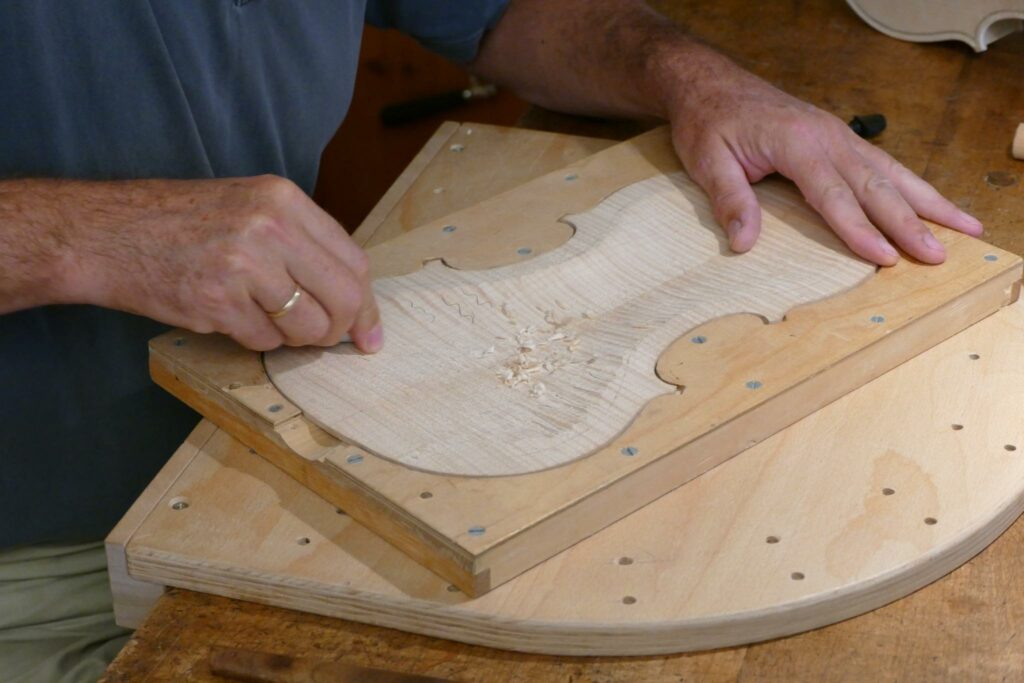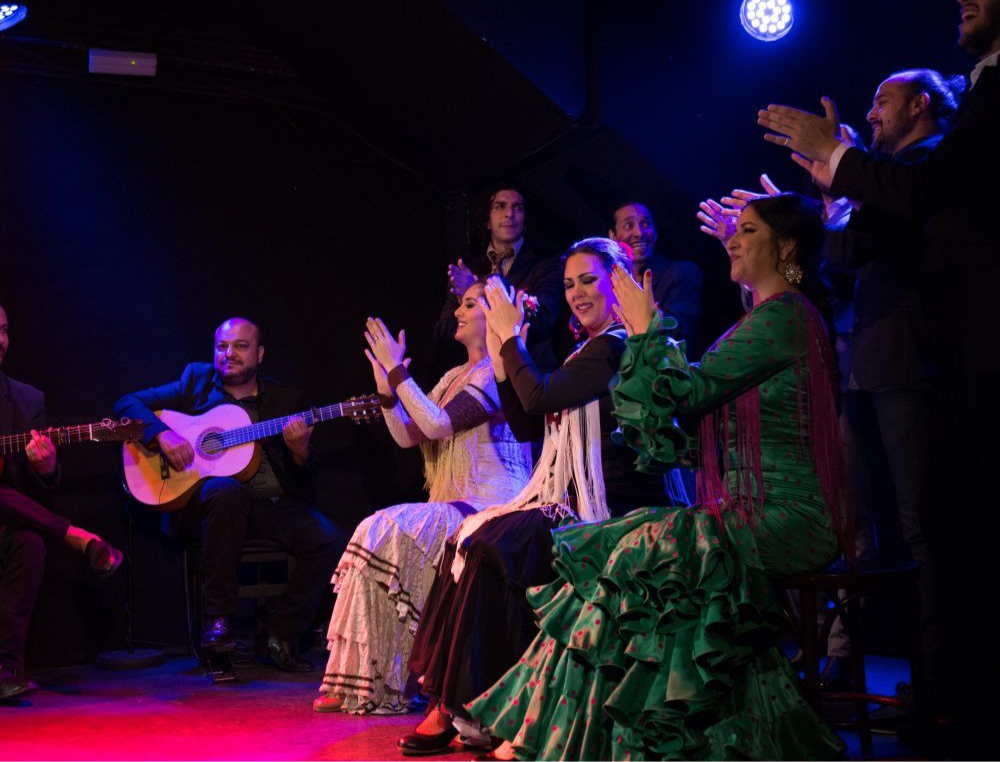
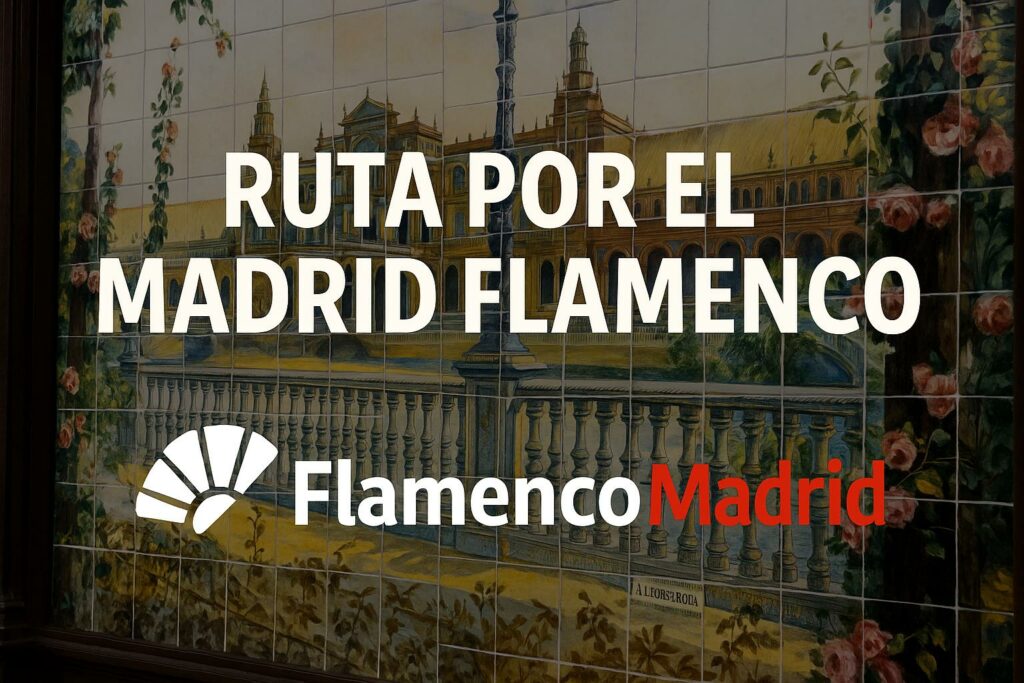
Curiosidades Flamencas
Walking Tour Through the Most Flamenco Side of Madrid: A 2-Hour Journey Full of Duende
You probably think you know Flamenco Madrid because you’ve booked a ticket to a tablao. And you’re right to do so. But what if we told you that the true duende of the city doesn’t only live under the spotlights, but also breathes in its sidewalks, in the scent of wood from a century-old workshop, or in the echo of footwork escaping from an open window?
Forget conventional travel guides. We invite you to feel Madrid in a different way. Put on your most comfortable shoes, because we’re about to reveal the ultimate route—a journey through the history, craftsmanship, sweat, and flavor that feed flamenco’s magic every night.
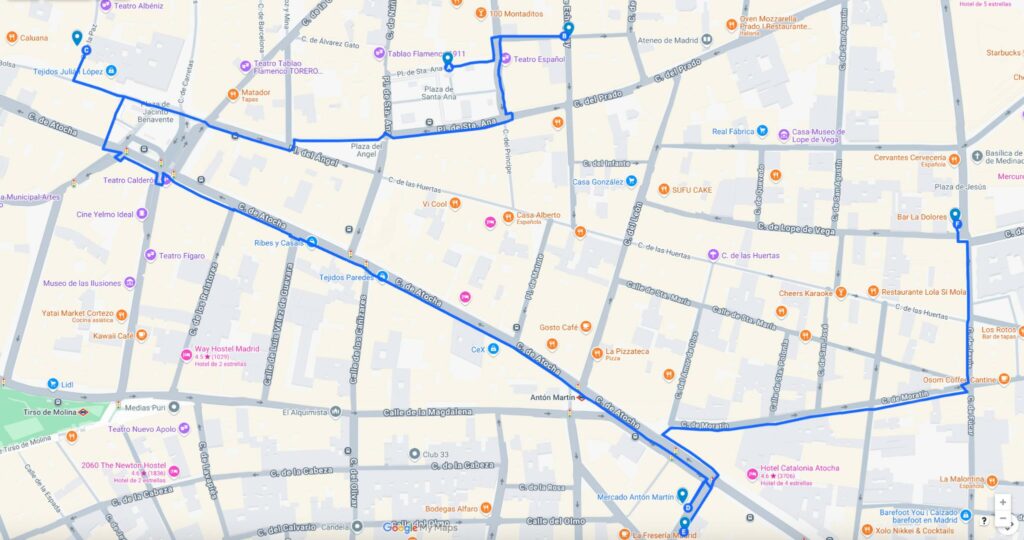
The Stops on Our Tour: The Ecosystem of Duende
1. Plaza de Santa Ana: The Kilometer Zero of Art
It all begins here. Plaza de Santa Ana is not only one of Madrid’s most beautiful squares, it’s also the open-air stage where everything started. In front of you stands the Teatro Español and the statue of Lorca—no less. But look around and find number 15. That incredibly preserved ceramic-tiled façade is the legendary Villa Rosa. Imagine for a moment the hum of the old Cafés Cantantes, the smoke, the hand clapping, the chaos. You’re standing at the epicenter.
But the magic doesn’t stop there. Turn your head and step into Calle Echegaray, the beating artery of flamenco bohemia, born right here.
This narrow street, with more duende per square meter than anywhere else in Madrid, was home to legendary venues like Los Gabrieles, another mythical spot known for its azulejos and for the icons who sang within its walls. It was a street of late nights, of artists, of raw, unfiltered flamenco.
And the tradition is still alive. In that same street, at number 15, Cardamomo Flamenco Madrid keeps the heartbeat going. It’s one of the most respected and electrifying tablaos in the world.
In just 100 meters, you’ve seen the past (Villa Rosa, Los Gabrieles) and the powerful present of Madrid’s flamenco scene. You’ve only just started and you’re already in the heart of it all.
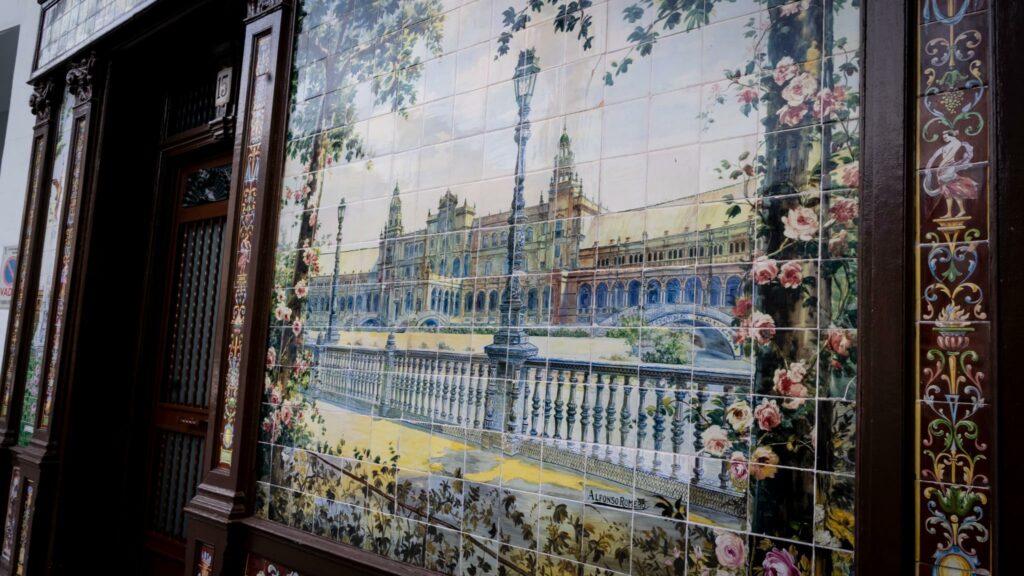
2. Guitarras Ramírez (Calle de la Paz, 8): Where the Soul of Strings is Born
From the plaza, take a short detour to Calle de la Paz, near Sol. It’s quiet here—almost sacred. At number 8, you’ll find the workshop of Guitarras Ramírez. This isn’t just a store—it’s a sanctuary. Since 1882, their hands have crafted guitars for legends like Paco de Lucía. Peeking through the window, you’ll smell wood and varnish. You’ll understand that a guitar isn’t built—it’s born.
3. Amor de Dios (Antón Martín Market): The Flamenco Kitchen
Next, we head to a hidden gem in plain sight: the upper floor of Antón Martín Market. There lies the Centro de Arte Flamenco Amor de Dios. This is the dream factory—the school that has shaped and still shapes the finest flamenco artists on the planet. You don’t need to go in. Just walk up the stairs and listen. The echo of footwork, a voice correcting arm movements… You’re hearing the heartbeat of Madrid’s flamenco. The sound of effort and passion.
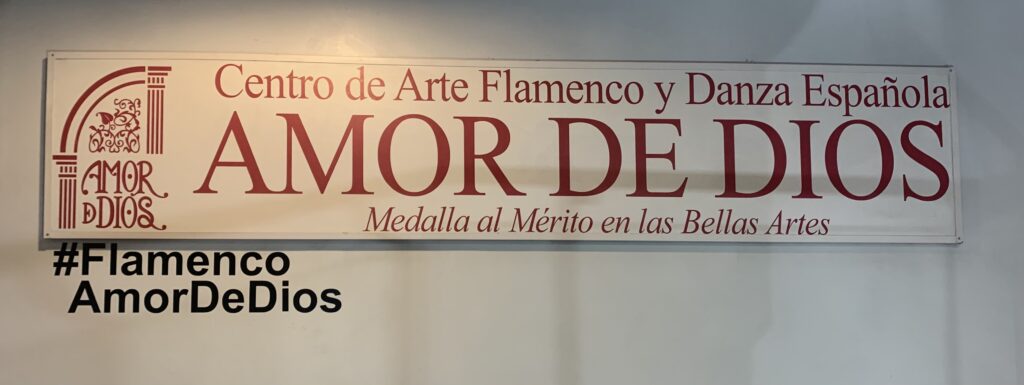
4. El Flamenco Vive (Calle del Conde de Lemos, 7): Where Art is Worn
Flamenco is learned, played… and worn. A pleasant walk from Antón Martín, near Ópera, brings you to El Flamenco Vive. It’s more than a store—it’s a cultural hub. Admire the fall of a Manila shawl, the craftsmanship of professional dance shoes, or get lost among books and records. It’s the perfect stop to understand that flamenco aesthetics are a bold statement.
5. Taberna La Dolores (Plaza de Jesús, 4): A Technical and Emotional Break
All that walking stirs both appetite and soul. Near the Barrio de las Letras, we recommend a stop at one of Madrid’s most traditional taverns: La Dolores. A tap vermouth, a perfectly poured beer, a tapa of marinated anchovies. Time to sit, reflect on your walk, and feel the pulse of the city. Flamenco is also about sharing—and this is the perfect appetizer before the night’s main course.
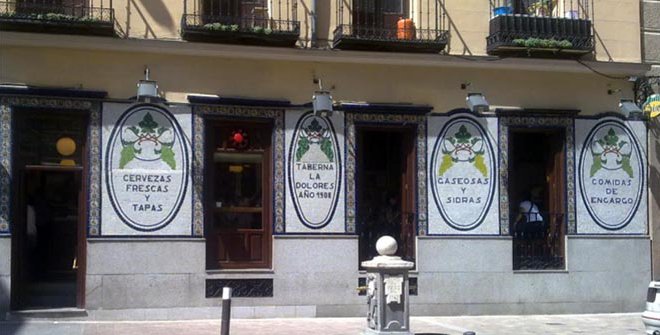
6. The Final Act: From the Street to the Stage
With history under your feet and Madrid’s flavor still lingering, we return to the heart of Barrio de las Letras. You’ve seen craftsmanship, training, and the weight of tradition. Now, it’s time to witness how all that explodes live on stage.
At this point, you face the big question: which tablao do I choose?
Madrid offers a rich variety, and each stage has its own magic. Some preserve the echo of a century of history in intimate settings that give you goosebumps. Others embrace the avant-garde, overflowing energy, and spectacular productions. The choice is personal—and it’s key to making your night unforgettable.
To make that decision easy and right, we’ve done the homework for you. We’ve analyzed the flamenco scene in Madrid and selected the most outstanding shows.
Madrid at Your Feet, Flamenco in Your Soul
We hope this walking tour reveals a different side of Madrid. Now, when you stroll through these streets, you won’t just see buildings—you’ll feel the stories they hold.
The city has shared its secrets with you. Now it’s time for the tablao to speak straight to your heart.

The best 6 Flamenco shows in Madrid
Meet with the majesty of flamenco and its contention in the tablaos of the capital of Spain.
See shows in Madrid
